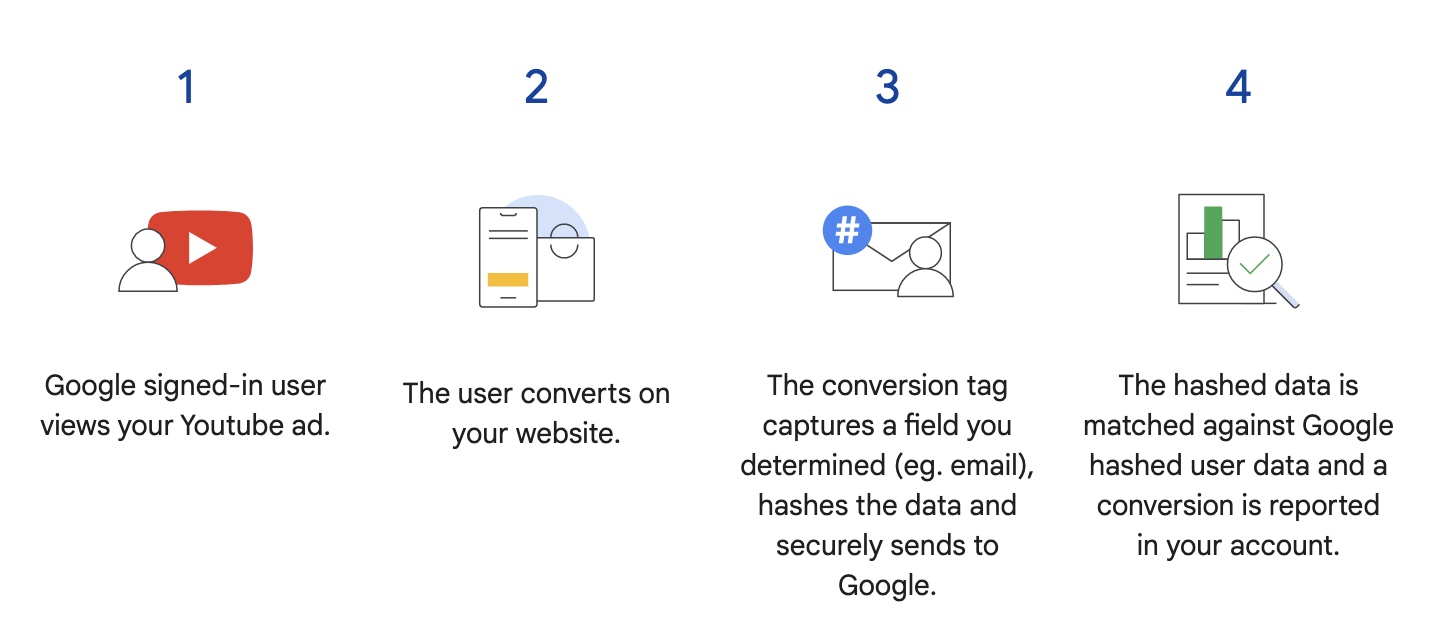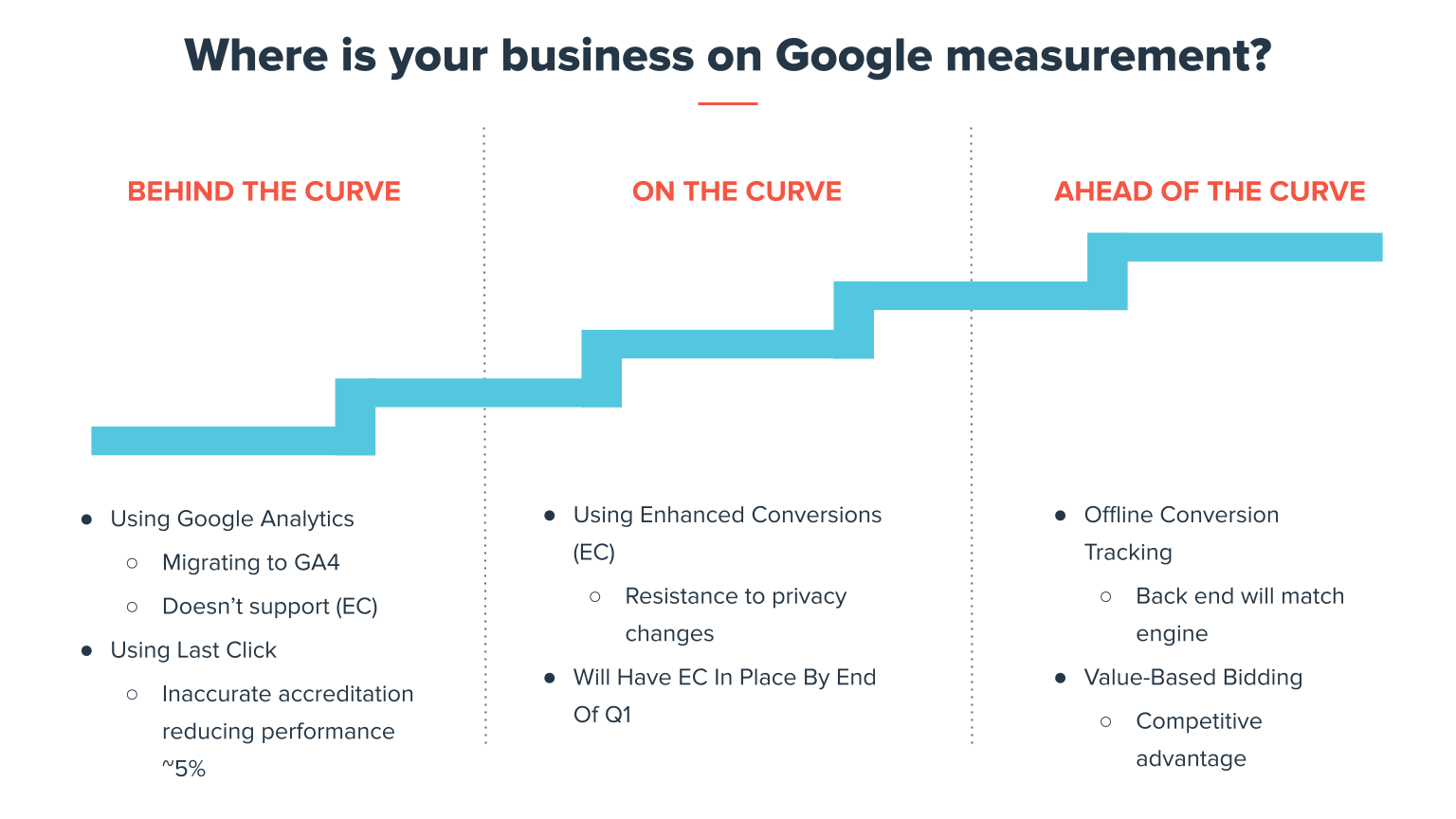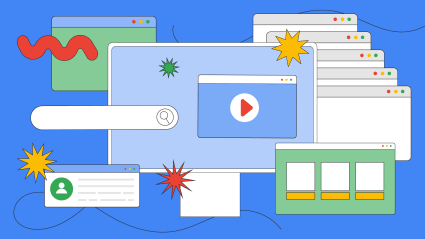As data privacy restrictions continue to tighten and marketers look to predict what’s coming next, Google has been announcing various changes and new products to solve for some of the measurement challenges brands will be facing.
One of the biggest developments is Google’s addition of enhanced conversions for their Google Ads tag, which uses first-party personally identifiable information (PII) to supplement conversion data, allowing advertisers to better understand the value that their campaigns bring.
Essentially, Google will leverage freely given PII to plug gaps in conversion data. The goal is a privacy-safe, accurate way to determine the impact of your Google marketing campaigns.
 Marketers were able to start leveraging enhanced conversions at the end of 2021, and it will soon become the minimum viable product for measuring conversion actions in full in a privacy-centric world.
Marketers were able to start leveraging enhanced conversions at the end of 2021, and it will soon become the minimum viable product for measuring conversion actions in full in a privacy-centric world.
What does that mean? You need to understand exactly what’s different about enhanced conversions and get comfortable using them before the switch becomes mandatory. Let’s start from the top.
Start learning: What exactly are Google enhanced conversions?
According to Vidhya Srinivasan, Google’s VP/GM of Advertising, enhanced conversion modeling “uses advanced machine learning to more accurately understand how each marketing touchpoint contributed to a conversion, all while respecting user privacy.”
It works by sending hashed first-party data from your website to Google to supplement your existing conversion tags while keeping that customer data safe and secure.

Source: Google
Some marketers aren’t completely comfortable with these less direct privacy-first solutions to attribution, in particular voicing concerns around giving Google and its modeling too much control without enough visibility.
If you’re uncomfortable with enhanced conversions, we recommend looking into offline conversion tracking, a system that gives you more control over what data what feeds into Google. At the end of the day, you get to make the decision, so weigh your options and do what is best for your business.
Get started: How to use Google enhanced conversions
To effectively use enhanced conversions to measure attribution, you need to meet the following criteria:
- You should be using the Google Ads tag
- Your checkout process should include a form of PII on the page that’s not masked, since enhanced conversions leverage the consumer’s email/address/phone number
- You may need to update your Terms & Conditions page since personal information will be sent to Google
If you don’t have all of these in place, you probably won’t get the information you need. Get everything set up first, then opt into enhanced conversions to avoid any roadblocks.
There are three different ways to set up enhanced conversions:
- Automatic
- GTM – CSS
- Manual
The right one to use for your business depends on a variety of factors. You should work with your Google representatives (and/or your agency) to determine what your options are and how to implement them correctly.
Once you’ve turned enhanced conversions on, observation mode can be anywhere from 30-60 days depending on your campaigns; for search campaigns, 30 days is likely sufficient while YouTube campaigns should probably be closer to the full 60 days.
You should monitor enhanced conversions once they’re turned on to understand how many conversions it’s adding and if it’s actually driving any lift in your numbers.
Keep in mind that the more PII you bring into the system, the more efficient enhanced conversions will actually be.
Like any tracking or measurement method, enhanced conversions come with some limitations and challenges:
- Enhanced conversions only work when certain customer data is present (e.g. email address, name and home address, or phone number if one of the other two pieces of information is present).
- If you don’t have enough hands on deck, the process of updating your tags can be a heavy lift. (For Wpromote clients, our DI team can help!)
- The solution is very much in a walled garden: it won’t help you with attribution on any other platform.
If you feel left out because you currently leverage Google Analytics or SA360 for conversion goals, we suspect that Enhanced Conversions will be available for both platforms at a future date. In general, we recommend leveraging either Google Ads tags and/or SA360 tags for optimizations. Remember: more data = better outputs.
Don’t wait: Why you need to get comfortable with enhanced conversions now
Data privacy isn’t something that you should sleep on. New data privacy laws are coming into effect in January 2023 and more are likely on the way. Remember the panic from social media marketers when the iOS updates hit last year and started impacting campaigns? Inaction now will lead to the same results for your team.
You need to get privacy-compliant sooner rather than later for a number of reasons, from upcoming state legislation to consumer demand for more transparency from brands around how they use data.
Even if you’re behind on preparing for privacy elsewhere in your marketing org (we truly can’t emphasize enough that deprioritizing privacy is a potentially catastrophic mistake for your business!), evaluating Google’s enhanced conversions should be a priority for you as they continue to put it front-and-center when it comes to the future of measurement on the platform.
Start by figuring out how far behind or ahead of the curve you are when it comes to privacy preparation across the Google platform.

Get acclimatized to using measurement solutions across your marketing that are based on modeled data—and don’t assume that those solutions are automatically less accurate or don’t come with their own benefits. If modeled data bothers you, move to offline conversion tracking.
Enhanced conversions are likely to increase conversion results. That should be expected because they’re better at giving credit where credit is due across channels. We’ve have seen lifts as high as:
- 5% for Search Campaigns
- 12% for YouTube Campaigns
Even a 1% lift is beneficial!
Remember: the more information you feed the machine, the better the outcomes.
Signals are going to change over time, but the more you can shift to marketing that utilizes first-party data, the more resilient to privacy changes you will be. Start exploring enhanced conversions so you’re ready for what comes next.







Responses